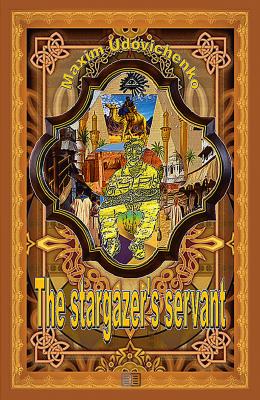ТОП просматриваемых книг сайта:
The stargazer’s servant. Максим Удовиченко
Читать онлайн.Название The stargazer’s servant
Год выпуска 2019
isbn 978-5-6041795-3-6
Автор произведения Максим Удовиченко
Жанр Приключения: прочее
Издательство Издание книг ком
3
Mithqal – is a monetary unit in the form of a gold coin, commonly used at that time. According to far-fetched survived documentary records, for one gold mithqal, it was possible to buy 10 sheep. Whereas trained woman slave in the city of Timbuktu cost 25 mithqals. (The city located rather near to Aoudaghost, in the north of the central part of Mali, a bit less than at 13 km to the north from the river Niger). Nowadays the capital of the self-proclaimed Islamic state Azawad.
4
The Gold dinar – is a monetary unit. The gold dinar of that time was a very weighty piece of metal, with 4.729 grams of pure gold….
5
The mud – was an ancient measurement unit for volume of weight, used in Aoudaghost at that time. One mud equaled to 1,5 litters of liquid or 2 kg. of grain.
6
The Soninke (also called Sarakole, Seraculeh, or Serahuli) are a Mande people who descend from the Bafour and are closely related to the Imraguen from Mauritania. They speak the Soninke language, a Mande language. They were the founders of the ancient empire of Ghana c. 750-124 °CE. Subgroups of Soninke include the Maraka and Wangara.
After contact with Muslim Almoravid traders from the north around 1056, Soninke nobles of neighboring Takrur were among the first ethnic groups from Sub-Saharan West Africa to embrace Islam. When the Ghana empire dispersed, the resulting diaspora brought Soninkes to Mali, Senegal, Mauritania, Gambia, and Guinea-Bissau.
7
It is worth noting, however, that at the time of events the=lmora-vids military leader Yahya-Ibn-Omar had managed to create a numerous and well-rehearsed army. Their main force was infantry, armed with javelins in the front ranks and pikes behind, formed into a phalanx and supported by camelmen and horsemen on the flanks.
8
Sijilmasa (also Sijilmassa, Sidjilmasa and Sigilmassa) was a medieval Moroccan city and trade entrepot at the northern edge of the Sahara Desert in Morocco. The ruins of the town lie for five miles along the River Ziz in the Tafilalt oasis, near the town of Rissani. The town's history was marked by several successive invasions by Berber dynasties. Up until the 14th century, as the northern terminus for the western trans-Sahara trade route, it was one of the most important trade centers in the Maghreb during the Middle Ages.
9
Timbuktu – (timbAk'tu:); French: Tombouctou [tabuk'tu]; Koyra Chiini: Tumbutu), formerly also spelled Timbuctoo and Timbuktoo, is a city in the West African nation of Mali situated 20 km (12 mi) north of the River Niger on the southern edge of the Sahara Desert. The town is the capital of the Timbuktu Region, one of the eight administrative regions of Mali. It had a population of 54,453 in the 2009 census.
Starting out as a seasonal settlement, Timbuktu became a big and prosperous settlement early in the 12th century. From the 11th century and onward, Timbuktu became an important port where goods from West Africa and North Africa were traded. After a shift in trading routes, Timbuktu flourished from the trade in salt, gold, ivory and slaves. In its Golden Age, the town's numerous Islamic scholars and extensive trading network made possible an important book trade: together with the campuses of the Sankore Madrasah, an Islamic university, this established Timbuktu as a scholarly center in Africa. Several notable historic writers, such as Shabeni and Leo Africanus, have described Timbuktu. These stories, not without reason, fueled speculation in Europe, where the city's reputation shifted from being extremely rich to being mysterious. It became part of the Mali Empire early in the 14th century.
10
Messufa – are black nomadic people and desert dwellers.
11
Atar (Arabic: Berber for mountain) is a town in northwest
ern Mauritania, the capital of the Adrar Province and the main settlement on the Adrar Plateau. It is home to an airport, a museum and a historic mosque, remained from 1674. As of year 2000 it had a population of 24,021.
12
Salt, digged out and brought to Aoudaghost, as a rule, from the salt mines of Taghaza (also Teghaza) an abandoned salt-mining centre located in a salt pan in the desert region of northern Mali. It was an important source of rock salt for West Africa up to the end of the 16th century. The obtained salt was brought on sale by the messufa, in the most cases, black slaves of berbers-sanhadzha.
13
"Silent trade", also called silent barter, dumb barter ("dumb" here used in its old meaning of "mute"), or depot trade, is a method by which traders who cannot speak each other's language can trade without talking. Group A would leave trade goods in a prominent position and signal, by gong, fire, or drum for example, that they had left goods. Group В would then arrive at the spot, examine the goods and deposit their trade goods or money that they wanted to exchange.
14
Indigo powder had a distinct black hue. Today is widely used by Sahara tribes to protect the skin from the direct sunrays.
15
Katib – from Arabic – record clerk, writer.
16
Emir of the city – from Arabic – city administrator.
17
Mema is a region in Mali, Africa. A plain of alluvial deposits, it is situated north of Massina; west of Lake Debo and the Inner Niger Delta. Historically, Mema was one of the smaller Soninke states; it was also at one time a province of Ghana.

